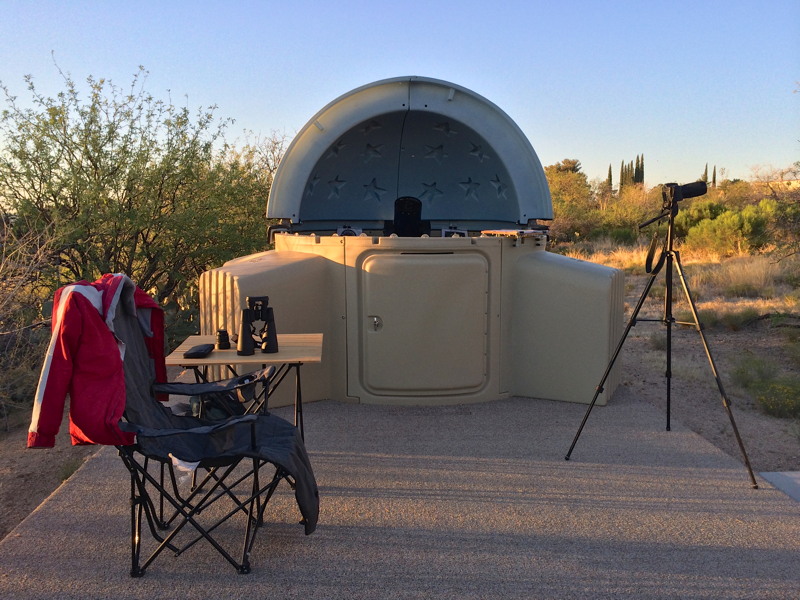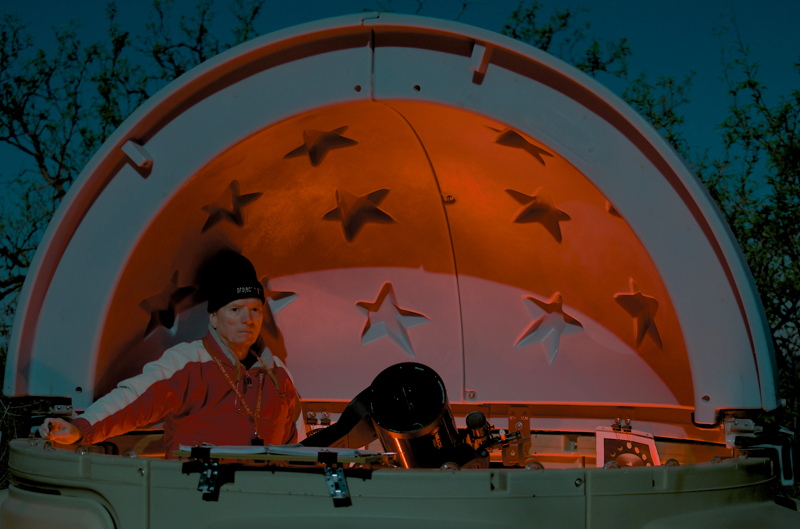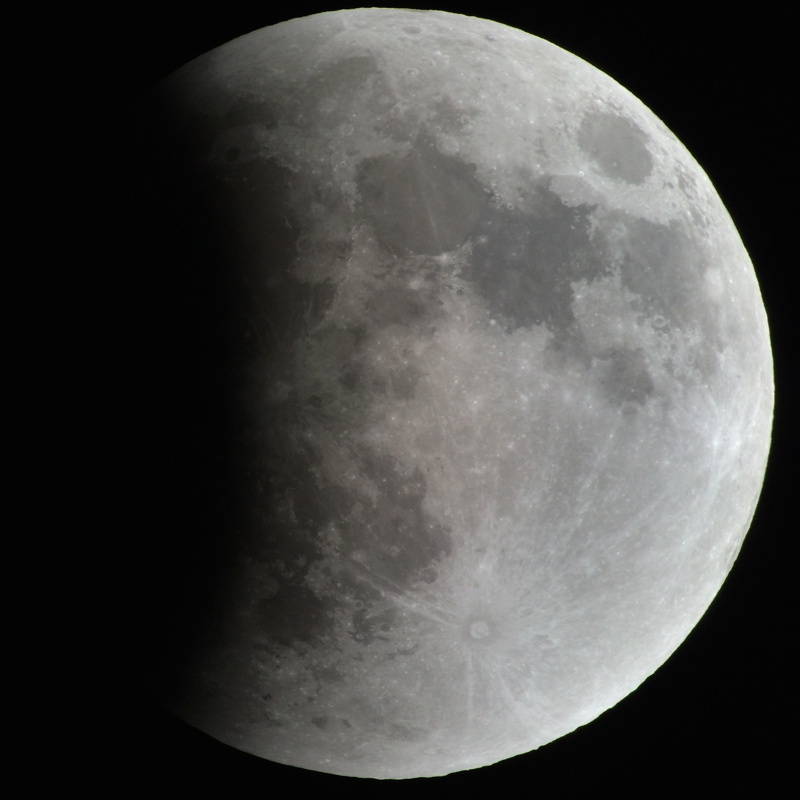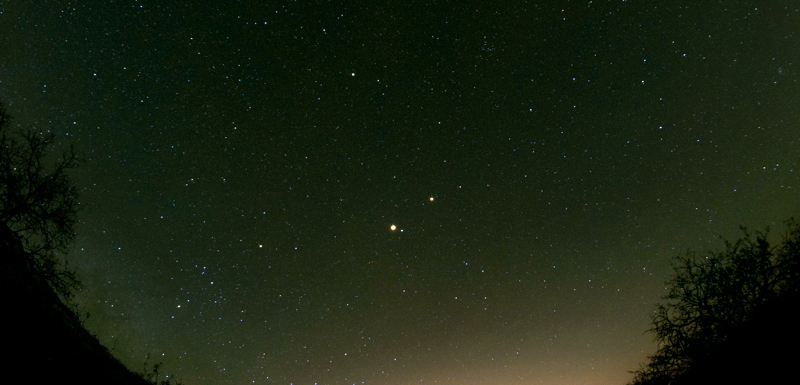
Total Lunar Eclipse
Posted: 15 April 2014
For the last Total Lunar Eclipse visible from Cassiopeia Observatory (10 December 2011) I used my old Edmund Scientific 3" Newtonian Telescope and an iPhone 4. You can see my report at "50 Year Old Edmund 3" Telescope, iPhone 4, & Total Lunar Eclipse". For the 14-15 April 2014 Total Lunar Eclipse, I mounted an iPhone 5s on the 8" LX200-ACF using my homemade afocal adapter and photographed the moon at 77X. I also did some sky photography using a photographic tripod mounted D7000 DSLR with both telephoto and fisheye lenses. This report covers the night of the Total Lunar Eclipse.
|
Opened: Monday, 14 April 2014, 1816 MST Temperature: 82°F |
Session: 674 Conditions: Clear, slight breeze |
Set up some items on the observatory patio:

Next, I cleaned the 1.25" 26mm eyepiece (which would be used for iPhone afocal imaging) and the 8" LX200-ACF corrector lens. Synced the observatory clock to WWV (5 MHz). 1842 MST: powered up the telescope.
1847 MST: viewed Jupiter, 83X. The four Galilean Moons were visible. Switched to 222X. 1853 MST: sunset. 1900 MST: the moon Io was about to be eclipsed by the planet, so I watched it. 190616 MST: Io eclipsed. (Gee, two eclipses this night for the price of one!) 1918 MST: viewed Mars, low in the southeast, 83X. Too low for good viewing but the North Polar Cap was visible.
1920 MST: enjoyed watching the stars come out from my recliner on the observatory patio. 1949 MST: the moon was now above the hill to the southeast. Watched it rise using the 12x70 binoculars. 2012 MST: viewed Mars, 222X. Could see the North Polar Cap, some clouds, and some dark areas. But this night was all about observing the Total Lunar Eclipse, so slewed to the moon.
2015 MST: moon, 83X and 77X. Very bright, with a very slight terminator visible. 2019 MST: took this iPhone 5s afocal 77X photo of the moon through the 8" telescope:

Here's me inside the SkyShed POD, illuminated by the observatory red lighting and the bright full moon:

2145 MST: no terminator was visible now. Penumbral eclipse started at 2153 MST. During the partial phases (which began at 2258 MST), and during totality (0006-0124 MST), I did both iPhone afocal imaging and D7000 DSLR photography. When not taking photographs I observed the eclipse and the sky using the naked eye and the 12x70 binoculars. What follows are the images I took.
iPhone 5s afocal 77X 8" LX200-ACF:
2155 MST:

2258 MST:

2315 MST:

2330 MST:

2345 MST:

Total Eclipse, 0025 MST:

D7000 DSLR:
Mid-Eclipse, 0045 MST, Spica at lower right:

Mid-Eclipse, 0045 MST, Mars at upper right, Spica at lower right:

0054 MST, fisheye lens (cropped); Scorpius at lower left; Leo at upper right; Moon, Spica, and Mars at center:

And just to prove it could be done, this is an iPhone 5s photo (some digital zoom) showing the moon, Mars, and Spica, taken at 0108 MST:

Once Totality ended, I monitored the eclipse using the 8" telescope with a 2" 24mm (83X) UWA eyepiece. I also used my naked eyes as well as the 12x70 binoculars. The Umbra phase of the eclipse ended at 0233 MST and I began closing up.
This sequence of images was taken using the D7000 DSLR, 300mm lens. Time goes from right to left.

Click or tap on the image to view a larger version
|
Closed: Tuesday, 15 April 2014, 0243 MST Temperature: 55°F |
|
Comments are welcome using Email. If you are on Twitter you can use the button below to tweet this report to your followers. Thanks.
Cassiopeia Observatory Home Page